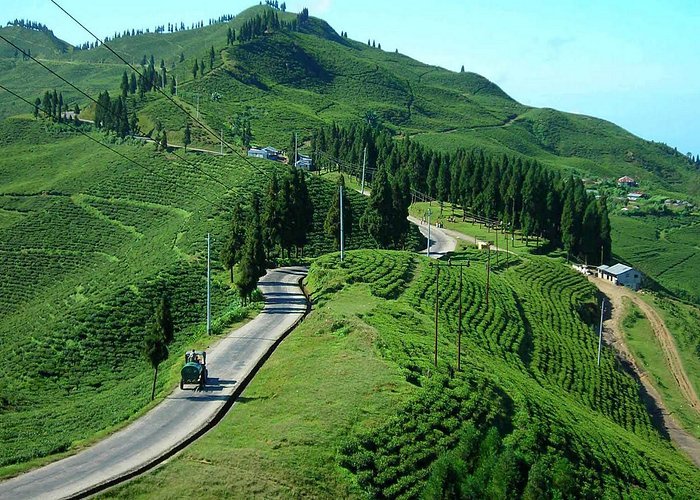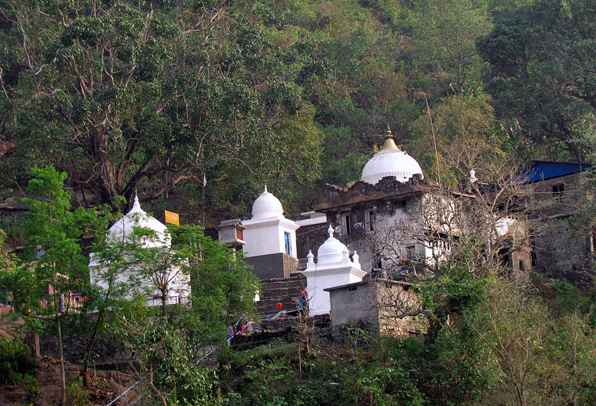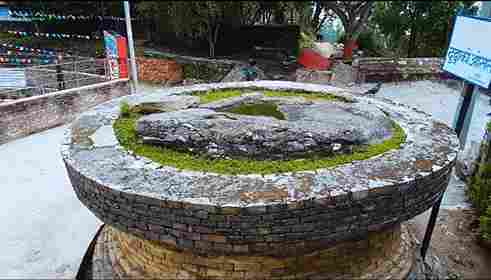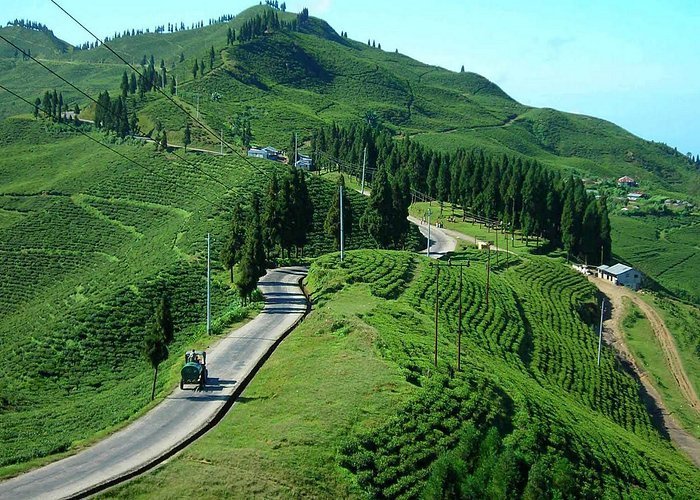
Solu Khumbu
Solu Khumbu district, located in the northeastern region of Nepal, is a popular destination for travelers seeking adventure and natural beauty. It is home to some of the world's highest peaks, including Mount Everest, and is known for its stunning landscapes, diverse wildlife, and unique culture.
The district is inhabited by the Sherpa people, who are renowned for their mountaineering skills and hospitality. Visitors can explore the local villages and experience their traditional way of life, including their cuisine, music, and dance.
One of the must-visit places in Solu Khumbu is the Sagarmatha National Park, which is a UNESCO World Heritage site. The park boasts a diverse range of flora and fauna, including rare species such as the snow leopard and the red panda. The park also offers breathtaking views of the Himalayan mountains, including the stunning Khumbu Glacier.
Another popular attraction in Solu Khumbu is the Tengboche Monastery, which is the largest monastery in the region. Visitors can witness the monks' daily prayers and rituals, and also enjoy panoramic views of Mount Everest and its neighboring peaks.
For the adventurous, there are numerous trekking routes and mountaineering opportunities in the area. The most famous trek in Solu Khumbu is the Everest Base Camp Trek, which takes visitors on a 12-day journey through some of the most beautiful and challenging terrain in the world.
In conclusion, Solu Khumbu district is a must-visit destination for anyone seeking adventure and natural beauty. With its stunning landscapes, unique culture, and friendly people, Solu Khumbu is truly a gem in the heart of the Himalayas.

Ilam
Ilam is a beautiful district in the eastern region of Nepal, known for its lush tea gardens, beautiful scenery, and rich cultural heritage. It is situated on the foothills of the Himalayan range and is surrounded by hills, forests, and rivers.
The district is famous for its tea production, and visitors can explore the tea gardens and learn about the tea-making process. The famous Ilam tea is produced here, and visitors can taste and purchase the tea directly from the farmers.
One of the must-visit places in Ilam is the Mai Pokhari Lake, which is a natural lake situated at an altitude of 2438 meters. The lake is surrounded by dense forests, and visitors can enjoy the stunning views of the surrounding hills and the beautiful reflection of the sky in the clear water.
Another popular attraction in Ilam is the Kanyam Tea Estate, which is one of the largest tea estates in the region. Visitors can take a tour of the estate and learn about the tea-making process, from plucking the tea leaves to processing and packaging.
Ilam is also home to many beautiful temples and monasteries, including the Pathibhara Devi Temple and the Gajur Mukhi Temple. Visitors can explore these religious sites and experience the local culture and traditions.
For the adventurous, there are many trekking routes and hiking trails in Ilam, including the Sandakphu Trek and the Kanchenjunga Trek. These treks offer breathtaking views of the Himalayan range and the surrounding natural beauty.
In conclusion, Ilam is a beautiful and peaceful district that offers a unique cultural and natural experience for visitors. From its tea gardens to its temples and monasteries, Ilam has something for everyone to enjoy.

Jhapa
Jhapa district is a beautiful and vibrant district in the eastern region of Nepal, bordering India. It is the largest district in the eastern region, and is known for its lush greenery, unique culture, and rich history.
The district is home to a diverse range of ethnic groups, including the Rajbanshis, Limbus, and the Maithil Brahmins. Each group has its own unique cultural traditions, music, and dance, and visitors can experience this diversity through the district's numerous festivals and celebrations.
One of the must-visit places in Jhapa is the Kankai Mai Temple, which is dedicated to the goddess Kankai. The temple is located on the banks of the Kankai River, and visitors can witness the daily prayers and rituals performed by the temple priests.
Another popular attraction in Jhapa is the Beldangi refugee camp, which is home to thousands of Bhutanese refugees. Visitors can explore the camp and learn about the history and struggles of the Bhutanese people.
For nature lovers, Jhapa is home to many stunning natural sites, including the Koshi Tappu Wildlife Reserve. The reserve is home to over 500 species of birds, including rare and endangered species such as the Bengal Florican and the Sarus Crane. Visitors can also witness the majestic Bengal tigers and the endangered Indian rhinoceros in their natural habitat.
In addition, Jhapa is famous for its tea gardens, and visitors can explore the tea gardens and learn about the tea-making process. The famous Ilam tea is also produced in Jhapa, and visitors can taste and purchase the tea directly from the farmers.
Jhapa district is also known for its delicious cuisine, which is a blend of Nepali, Indian, and Tibetan influences. Visitors can savor local delicacies such as the famous Gundruk soup, momos, and chatpate.
In conclusion, Jhapa district is a unique and diverse destination in Nepal, offering a mix of culture, history, and natural beauty. From the Kankai Mai Temple to the Koshi Tappu Wildlife Reserve, Jhapa has something to offer for everyone.

Bhojpur
Bhojpur is a picturesque district located in the eastern region of Nepal, known for its natural beauty, rich cultural heritage, and historical significance. The district is named after the legendary king Bhoja, who ruled over the region in ancient times.
The district is home to a diverse range of ethnic groups, including the indigenous Rai and Limbu communities, who have their own unique cultural traditions, music, and dance. Visitors can experience this diversity through the district's numerous festivals and celebrations, such as the Sakela festival, which is celebrated by the Rai community.
Bhojpur is also home to several stunning natural sites, including the Jaljale Himal, which is one of the highest peaks in the district and a popular destination for trekking enthusiasts. Visitors can also explore the Arun River, which flows through the district and offers opportunities for rafting and kayaking.
Another popular attraction in Bhojpur is the Pashupatinath Temple, which is located in the district's headquarters and is dedicated to the Hindu deity Lord Shiva. The temple is a significant religious site and attracts devotees from all over Nepal and India.
For history buffs, Bhojpur has a rich historical legacy, and visitors can explore several historical sites such as the Shaligram Mahadev Temple, which is believed to date back to the 7th century. The district is also home to several ancient forts and palaces, which provide a glimpse into the region's rich history and architecture.
Bhojpur is also known for its traditional handicrafts, such as pottery and weaving, which are still practiced by the local communities. Visitors can witness the process of these crafts being made and can purchase them as souvenirs.
In conclusion, Bhojpur district is a unique and diverse destination in Nepal, offering a mix of culture, history, and natural beauty. From the Jaljale Himal to the Pashupatinath Temple, Bhojpur has something to offer for everyone.

Dhankuta
Dhankuta is a beautiful district located in the eastern region of Nepal, known for its natural beauty, cultural heritage, and historical significance. The district is named after the hill town of Dhankuta, which is its headquarters.
One of the main attractions of Dhankuta is its natural beauty. The district is home to several stunning natural sites, including the Tinjure-Milke-Jaljale Himalayan range, which is a popular destination for trekkers and hikers. Visitors can also explore the scenic Tamor and Arun Rivers, which offer opportunities for rafting and fishing.
Dhankuta is also known for its rich cultural heritage, and visitors can experience this through the district's numerous festivals and celebrations, such as the Chhintang festival, which is celebrated by the local Chhintang community. The district is also home to several ancient temples and shrines, including the Dhankuta Bazaar temple, which is dedicated to the Hindu deity Lord Shiva.
For history buffs, Dhankuta has a rich historical legacy, and visitors can explore several historical sites such as the Pakhribas Bhairabsthan Temple, which is believed to date back to the 7th century. The district is also home to several ancient forts and palaces, which provide a glimpse into the region's rich history and architecture.
Dhankuta is also known for its traditional handicrafts, such as basket weaving and dhaka textile weaving, which are still practiced by the local communities. Visitors can witness the process of these crafts being made and can purchase them as souvenirs.
In conclusion, Dhankuta district is a unique and diverse destination in Nepal, offering a mix of culture, history, and natural beauty. From the Tinjure-Milke-Jaljale Himalayan range to the Pakhribas Bhairabsthan Temple, Dhankuta has something to offer for everyone.

Khotang
Khotang is a district located in the eastern region of Nepal, known for its natural beauty, cultural heritage, and traditional handicrafts. The district is named after the hill town of Khotang, which is its headquarters.
One of the main attractions of Khotang is its natural beauty. The district is home to several stunning natural sites, including the Dudh Koshi River and the Khotang Bazaar. The area is surrounded by the Himalayas, including Mount Everest and Mount Makalu, providing visitors with stunning panoramic views of the snow-capped peaks.
Khotang is also known for its rich cultural heritage, and visitors can experience this through the district's numerous festivals and celebrations, such as the Sakela festival, which is celebrated by the indigenous Rai community. The district is also home to several ancient temples and shrines, including the Halesi Mahadev Temple, which is dedicated to the Hindu deity Lord Shiva.
For those interested in traditional handicrafts, Khotang is a must-visit destination. The district is known for its production of high-quality traditional dhaka textiles, which are made by local artisans using handlooms. Visitors can witness the process of these textiles being made and can purchase them as souvenirs.
In conclusion, Khotang district is a unique and diverse destination in Nepal, offering a mix of culture, history, and natural beauty. From the Dudh Koshi River to the Halesi Mahadev Temple and the traditional dhaka textiles, Khotang has something to offer for everyone.

Morang
Morang is a district located in the eastern region of Nepal, known for its rich cultural heritage, natural beauty, and diverse ethnic communities.
One of the main attractions of Morang is its cultural heritage. The district is home to several ancient temples and shrines, including the popular Koshi Tappu Wildlife Reserve, which is a UNESCO World Heritage Site, and the Hindu temple of Pathivara Devi. The region is also known for its numerous festivals and celebrations, such as the popular Tihar festival, which is celebrated by the locals with great enthusiasm.
Morang is also renowned for its natural beauty, including the scenic views of the Himalayas and the Koshi River, which flows through the district. The lush green forests, rolling hills, and terraced fields make for a picturesque setting that attracts visitors from all over the world.
The district is home to a diverse range of ethnic communities, including the indigenous Limbu and Tamang people, who have their own unique culture, traditions, and way of life. Visitors can witness and experience the daily lives of these communities, learn about their traditions, and taste their local cuisines.
In addition to these attractions, Morang is also known for its educational institutions, including the popular Biratnagar-based Koshi Medical College and the Birat Science Campus, which attracts students from all over Nepal.
In summary, Morang district in Nepal is a must-visit destination for those seeking cultural experiences, natural beauty, and a unique glimpse into the lives of diverse ethnic communities.

Okhaldhunga
Okhaldhunga district is located in the eastern region of Nepal and is known for its natural beauty, cultural heritage, and diverse ethnic communities.
One of the main attractions of Okhaldhunga is its natural beauty. The district is surrounded by lush green forests, rolling hills, and stunning views of the Himalayas, including Mount Everest, Makalu, and Kanchenjunga. The district is also home to several beautiful rivers and waterfalls, making it a popular destination for nature lovers and trekkers.
Okhaldhunga is also known for its rich cultural heritage, with several ancient temples and shrines, including the popular Tolu Gumba monastery and the Gumbas in Deurali. The district is also home to several festivals and celebrations, including the Khate festival, celebrated by the indigenous Rai community.
The district is also famous for its diverse ethnic communities, including the Rai, Sherpa, Limbu, Tamang, and Newar people, each with their unique culture, traditions, and way of life. Visitors can experience the daily lives of these communities, learn about their customs, and taste their local cuisines.
In addition to these attractions, Okhaldhunga is also a popular destination for adventure sports, including trekking, hiking, and mountain biking. The district offers several trekking trails, including the trek to the Tolu Gumba Monastery and the trek to the Dudh Kunda Lake.
Overall, Okhaldhunga district in Nepal is a must-visit destination for anyone interested in experiencing natural beauty, cultural heritage, and diverse ethnic communities, as well as for those seeking adventure sports opportunities.
